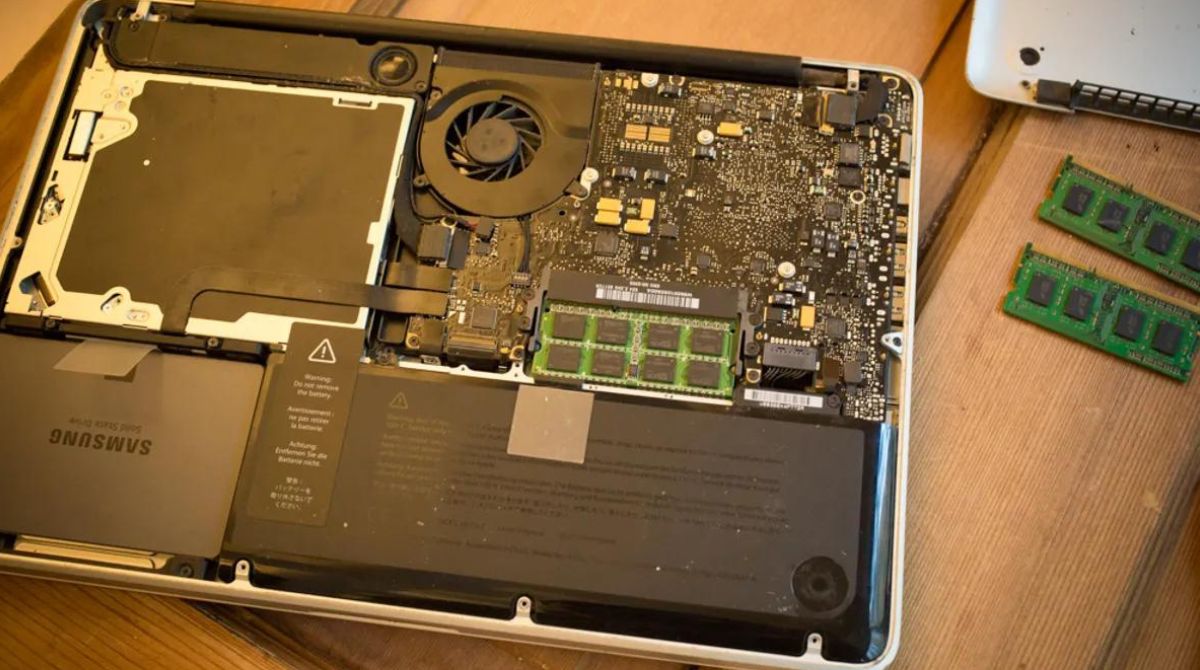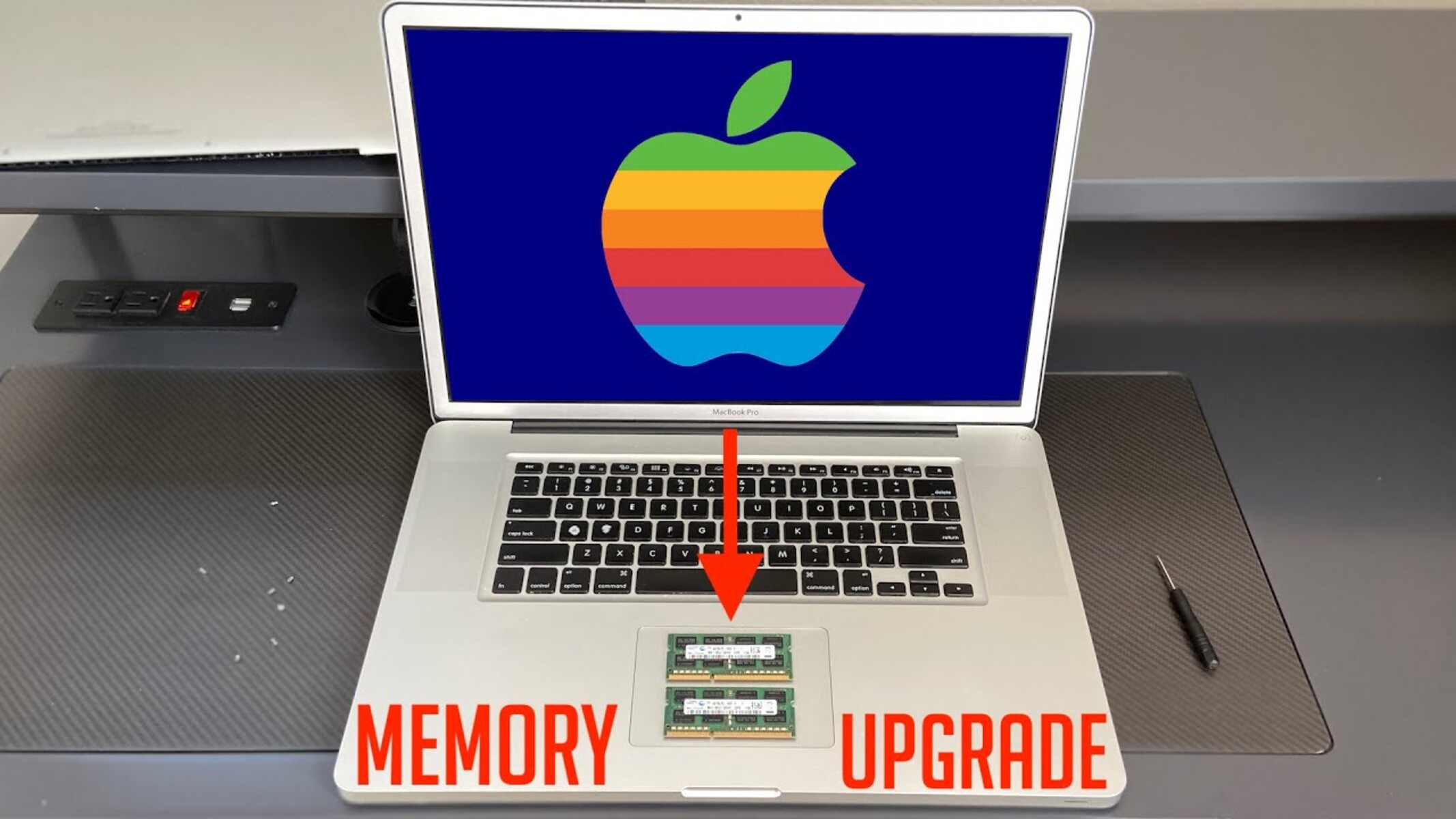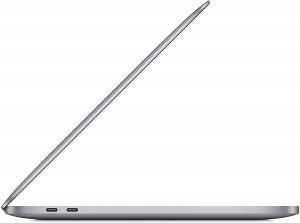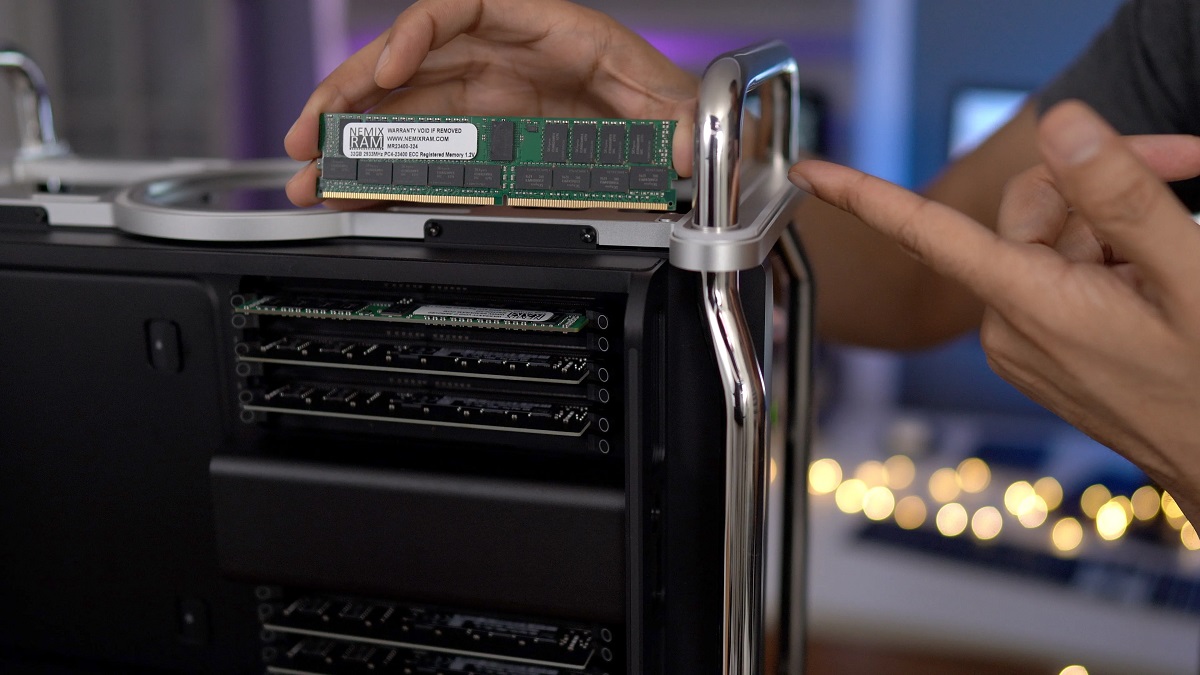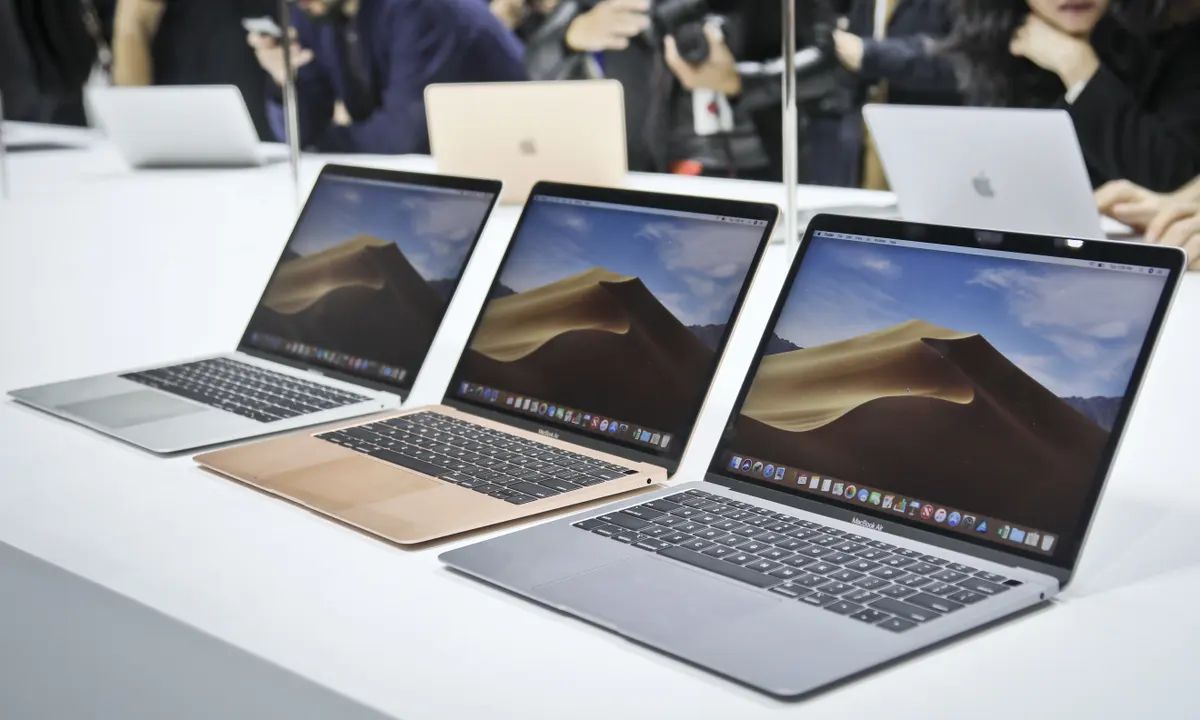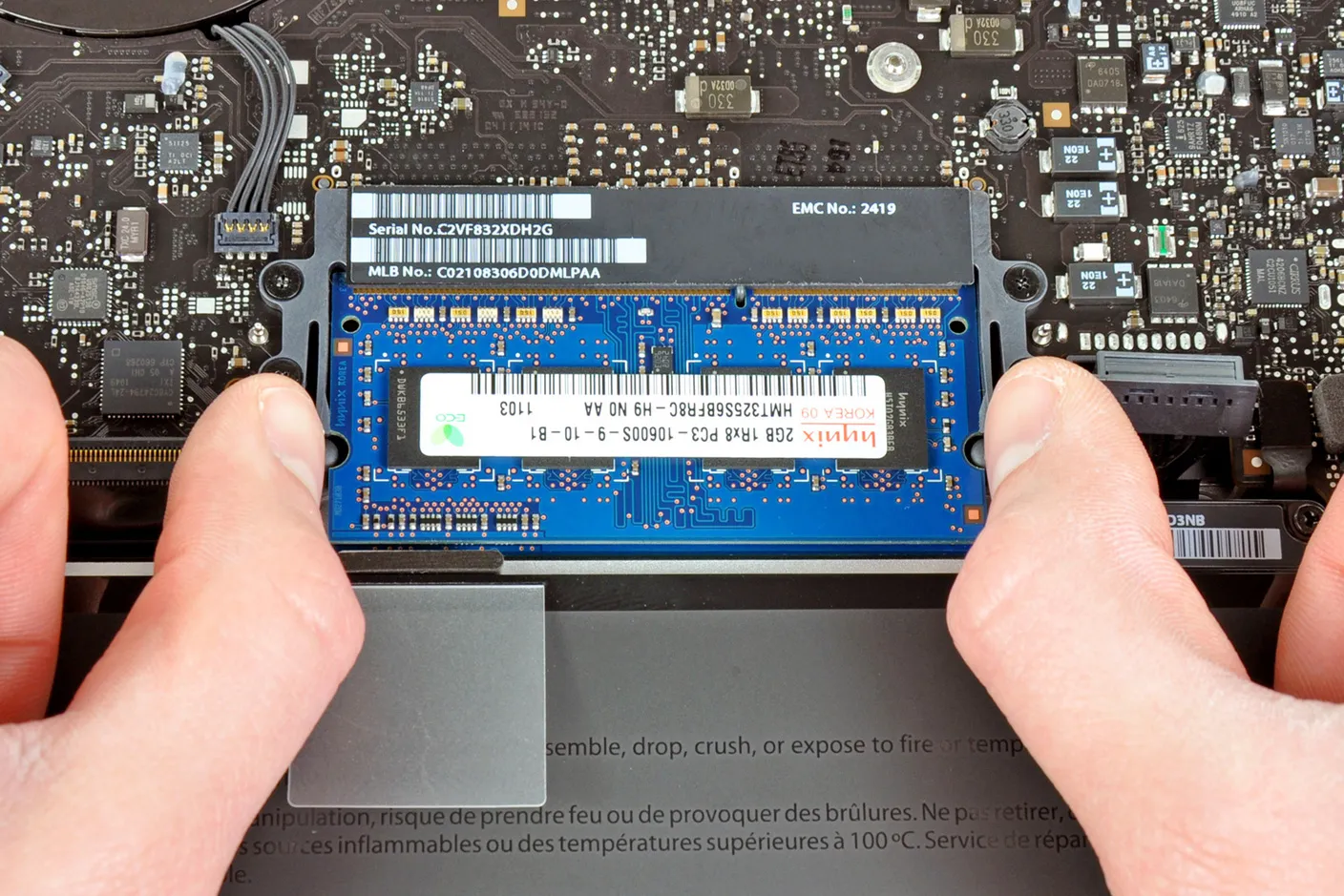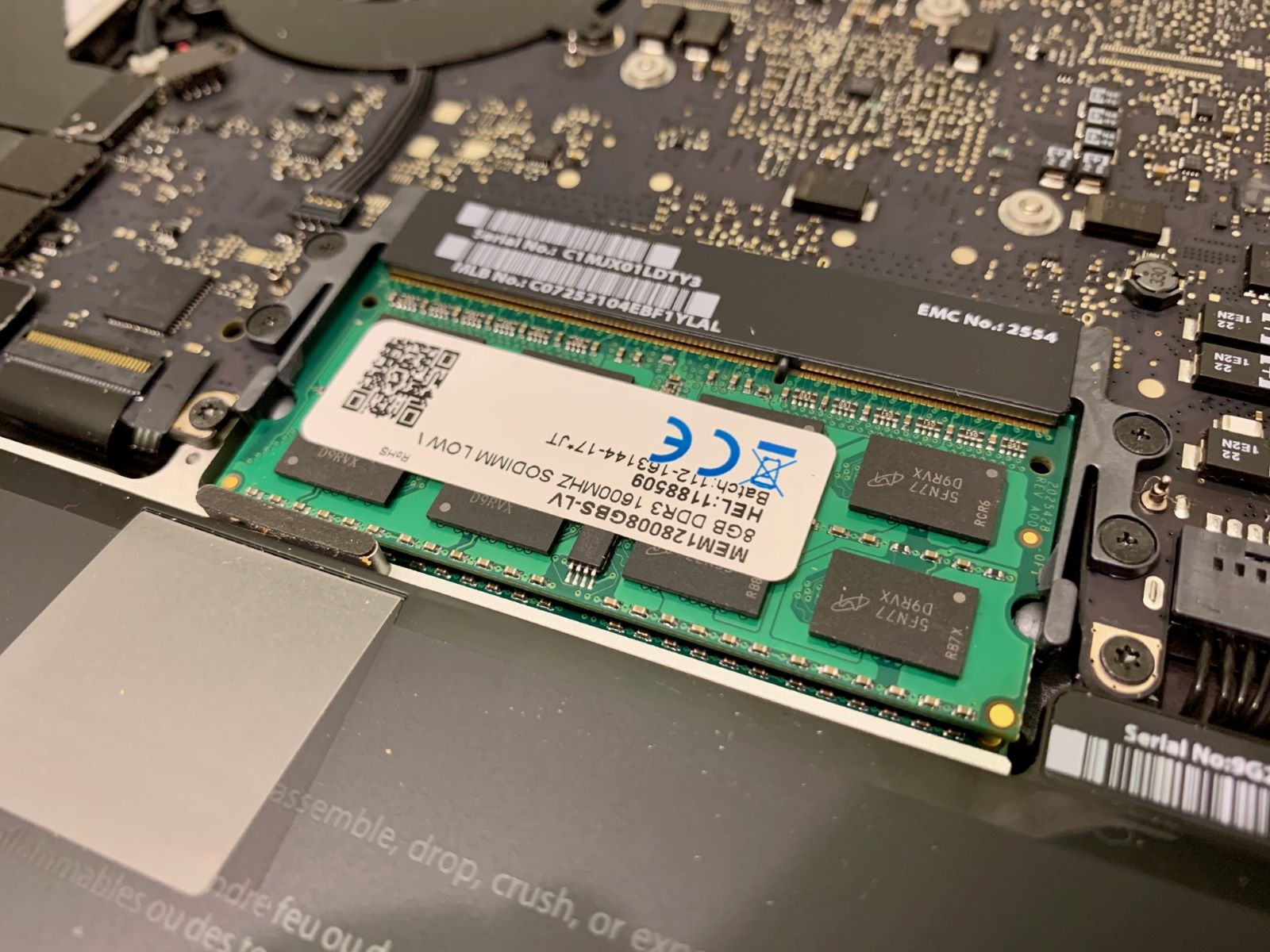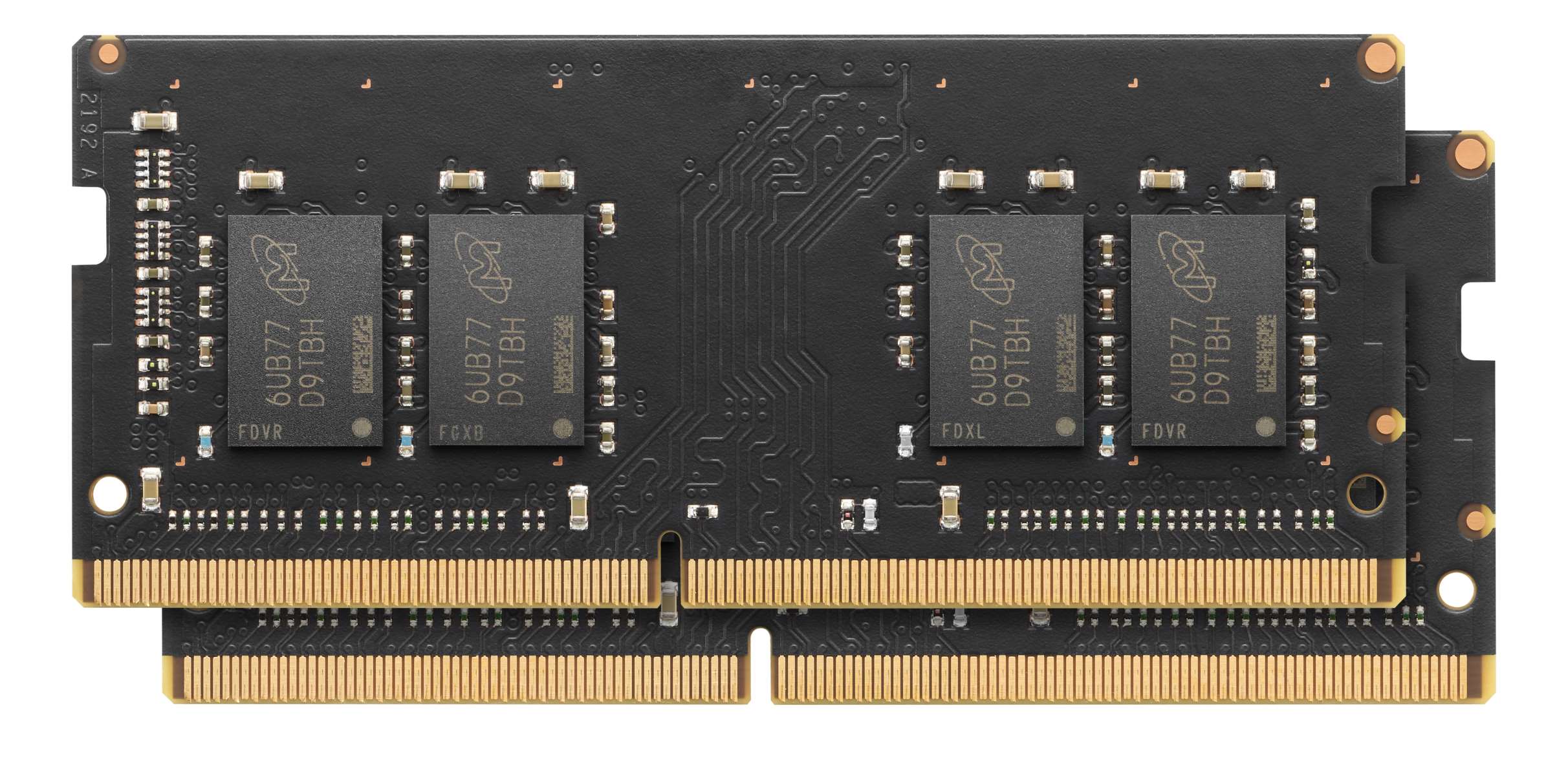Introduction
In today’s digital age, owning a high-performance laptop is crucial for many professionals and tech enthusiasts. The MacBook Pro, renowned for its sleek design and powerful performance, is a popular choice for individuals looking for a reliable and efficient computing experience.
But what truly sets the MacBook Pro apart from other laptops is its impressive RAM (Random Access Memory) capacity. RAM plays a fundamental role in the performance and speed of a computer, allowing for smooth multitasking, faster data access, and efficient program execution.
In this article, we will explore the importance of RAM in a MacBook Pro, the available options for upgrading RAM, and how to determine the ideal amount of RAM for your needs. Additionally, we will discuss the benefits of having more RAM and provide tips for managing RAM usage on your MacBook Pro.
Whether you are a graphic designer working with resource-intensive software, a developer running multiple virtual machines, or a casual user looking for a seamless browsing experience, understanding the role of RAM in a MacBook Pro will greatly enhance your computing experience.
So, let’s delve into the world of RAM and discover how it can significantly impact the performance of your beloved MacBook Pro.
What is RAM?
Before we delve into the specifics of RAM for a MacBook Pro, let’s first understand what RAM actually is. RAM, or Random Access Memory, is a crucial component of any computer or electronic device, including laptops.
RAM can be thought of as the short-term memory of your MacBook Pro. It is a type of computer memory that temporarily stores data that the processor needs to access quickly. Unlike permanent storage devices such as hard drives or SSDs, RAM provides fast and temporary storage for data that is actively being used by the computer.
When you launch an application, open a file, or perform any task on your MacBook Pro, the relevant data is loaded into RAM to facilitate quick and efficient access. The more RAM your MacBook Pro has, the more data it can store and access without having to rely on slower storage devices.
RAM operates at a much faster speed compared to storage devices, allowing the processor to retrieve and process data swiftly. It acts as a bridge between the processor and the storage devices, ensuring smooth and seamless performance.
It’s important to note that RAM is a volatile form of memory, which means that the data stored in RAM is lost when the computer is turned off or restarted. This is in contrast to permanent storage devices, which retain data even when the power is turned off.
In summary, RAM is a temporary storage space that allows your MacBook Pro to access and process data quickly. It plays a crucial role in ensuring smooth performance and efficient multitasking. In the next section, we will delve into the importance of RAM in a MacBook Pro and explore its various benefits.
Importance of RAM in a MacBook Pro
The RAM in a MacBook Pro is a vital component that directly impacts the overall performance and functionality of the device. Having an adequate amount of RAM is particularly crucial for MacBook Pro users who require powerful processing capabilities and multitasking capabilities for their daily tasks.
When you open multiple applications simultaneously or work with resource-intensive software, such as video editing or graphic design programs, your MacBook Pro relies heavily on RAM to store and access the necessary data quickly. Insufficient RAM can result in slower performance, lagging applications, and overall sluggishness.
One of the key benefits of having ample RAM in a MacBook Pro is the ability to multitask efficiently. With more RAM, your MacBook Pro can handle multiple tasks simultaneously without experiencing significant performance issues. You can seamlessly switch between applications, have multiple browser tabs open, and work on complex projects without any noticeable slowdown.
Furthermore, RAM acts as a buffer for frequently accessed data, allowing the processor to retrieve information quickly. This enhanced data retrieval speed not only improves the overall system performance but also reduces the time required for applications to load and respond.
Another aspect to consider is future-proofing your MacBook Pro. As software and applications become more demanding over time, having sufficient RAM ensures that your device can handle future updates and requirements. Investing in additional RAM now can help extend the lifespan of your MacBook Pro and provide a smoother computing experience as technology advances.
Overall, having an adequate amount of RAM in your MacBook Pro is essential for maximizing its performance, enabling efficient multitasking, and ensuring a seamless computing experience, especially for users who engage in resource-intensive tasks. In the next section, we will explore the available RAM options for MacBook Pro and how to determine the optimal amount for your needs.
RAM Options for MacBook Pro
When it comes to upgrading the RAM in your MacBook Pro, it’s important to know the available options and compatibility requirements. Apple offers various RAM configurations for different models of the MacBook Pro, allowing users to choose the option that best suits their needs.
Currently, MacBook Pro models come with different RAM sizes ranging from 8GB to 64GB. The specific RAM capacity depends on the model and year of your MacBook Pro, as well as whether it is a standard configuration or customizable option.
If you plan to purchase a new MacBook Pro, it’s recommended to consider the RAM configuration at the time of purchase as Apple’s laptops have non-upgradeable RAM. This means that you won’t be able to increase the RAM capacity in the future, so it’s crucial to select a configuration that aligns with your current and future requirements.
For users who already own a MacBook Pro and wish to upgrade their RAM, it’s essential to consult the official Apple website or contact Apple Support to determine if upgrading the RAM is possible for their specific model. In some cases, older MacBook Pro models may have limited upgrade options or may not support RAM upgrades at all.
It’s important to note that upgrading the RAM in a MacBook Pro requires technical expertise and precision. It’s advisable to consult an authorized Apple service provider or a professional technician to ensure a successful and compatible RAM upgrade.
Lastly, it’s worth considering third-party RAM options for MacBook Pro. There are reputable third-party manufacturers that offer compatible RAM modules for various MacBook Pro models. However, it’s important to choose a reputable brand and ensure that the RAM module is specifically designed for your MacBook Pro model to avoid compatibility issues.
In summary, when it comes to RAM options for MacBook Pro, it’s important to consider the different configurations available at the time of purchase and determine if upgrading the RAM is possible for your specific model. Consulting official Apple resources or authorized service providers is recommended to ensure compatibility and a successful RAM upgrade.
How Much RAM Do You Need?
Determining the ideal amount of RAM for your MacBook Pro depends on several factors, including your specific usage requirements, the complexity of your tasks, and your budget. The right amount of RAM can significantly enhance your productivity and overall computing experience.
For casual users who primarily use their MacBook Pro for web browsing, email, and basic productivity applications, 8GB of RAM is generally sufficient. This amount of RAM allows for smooth multitasking and ensures that everyday tasks can be performed without noticeable performance issues.
However, for more demanding tasks, such as graphic design, video editing, programming, or running virtual machines, it’s recommended to consider a higher RAM capacity. 16GB or 32GB of RAM would provide a significant boost in performance and ensure smooth operation of resource-intensive applications.
If you’re a professional working with extremely complex projects or utilizing specialized software, such as 3D modeling or music production software, you may want to consider 64GB of RAM or even higher depending on your specific requirements. These higher RAM capacities allow for seamless multitasking, faster rendering times, and improved overall performance.
Additionally, it’s important to consider your future needs and the longevity of your MacBook Pro. As software and applications become more demanding over time, having more RAM will help your device stay relevant and capable of handling future updates and requirements. Investing in additional RAM now can extend the lifespan of your MacBook Pro and provide a smooth computing experience as technology advances.
Ultimately, the amount of RAM you need for your MacBook Pro should be determined based on your specific usage requirements and budget. Consider the tasks you perform regularly, the complexity of those tasks, and any potential future needs. This will help you identify the optimal amount of RAM to ensure optimal performance and productivity.
Benefits of Having More RAM
Having more RAM in your MacBook Pro can bring a range of benefits, enhancing the overall performance and user experience. Let’s explore some of these advantages:
- Improved Multitasking: One of the primary benefits of having more RAM is the ability to multitask efficiently. With ample RAM, you can open multiple applications and switch between them seamlessly. This allows you to work on different projects, browse the web, and perform other tasks simultaneously without experiencing significant performance issues.
- Faster Application Loading: More RAM enables your MacBook Pro to store and access frequently used application data quickly. This leads to faster load times and responsiveness when launching applications. You’ll notice a significant improvement in productivity, as you won’t have to wait as long for applications to open.
- Enhanced Performance with Resource-Intensive Applications: If you use resource-intensive software, such as video editing, graphic design, or 3D modeling applications, having more RAM is crucial. These applications often require a significant amount of memory to process large files and perform complex operations. With additional RAM, your MacBook Pro can handle these tasks more efficiently, resulting in smoother performance and reduced rendering times.
- Better Virtual Machine Performance: If you frequently use virtualization software to run multiple operating systems or test software, having extra RAM is essential. Virtual machines require a portion of your MacBook Pro’s RAM to function properly. By having more RAM, you can allocate more memory to the virtual machine, resulting in improved performance and faster response times.
- Future-Proofing: Investing in more RAM for your MacBook Pro helps future-proof your device. As technology advances and software becomes more demanding, having ample RAM ensures that your device can handle future updates and requirements. It prolongs the usefulness of your MacBook Pro and reduces the need for a premature upgrade.
Overall, having more RAM in your MacBook Pro leads to improved multitasking, faster application loading times, enhanced performance with resource-intensive tasks and applications, better virtual machine performance, and future-proofing your device. It’s an investment in a smoother and more efficient computing experience.
RAM Upgrade Options
If you find that your current RAM capacity is insufficient for your needs, you may be considering upgrading the RAM in your MacBook Pro. While some MacBook Pro models have non-upgradeable RAM, others provide options for expansion or replacement. Let’s explore some of the RAM upgrade options available:
- Customizing your MacBook Pro: When purchasing a new MacBook Pro, you may have the option to customize the RAM capacity. Apple offers different RAM configurations at the time of purchase, allowing you to choose a higher capacity that suits your requirements. This customization option ensures that your MacBook Pro comes with the desired RAM capacity from the start.
- Authorized Service Providers: Apple-authorized service providers can help you upgrade your MacBook Pro’s RAM. They have the technical expertise and knowledge to ensure a successful and compatible RAM upgrade. These professionals can guide you through the options available for your specific MacBook Pro model and install the new RAM module according to Apple’s specifications.
- DIY RAM Upgrade: For MacBook Pro models that allow RAM upgrades, some users prefer to perform the upgrade themselves. This option requires technical expertise and precision. You will need to research the specific RAM module requirements for your MacBook Pro model, purchase a compatible RAM module from a reputable brand, and follow step-by-step guides or video tutorials to ensure a successful installation. It’s important to be cautious and follow the proper procedures to avoid damaging your MacBook Pro.
- Third-Party RAM: In addition to official Apple RAM upgrades, several reputable third-party manufacturers offer compatible RAM modules for various MacBook Pro models. These third-party RAM modules can sometimes provide a more cost-effective option compared to purchasing RAM directly from Apple. However, it’s crucial to choose a reputable brand and ensure that the RAM module is specifically designed for your MacBook Pro model to avoid compatibility issues.
Whether you choose to customize your MacBook Pro’s RAM at the time of purchase, consult an authorized service provider, perform a DIY upgrade, or opt for third-party RAM, it’s essential to ensure compatibility and adhere to Apple’s specifications. Upgrading the RAM in your MacBook Pro can significantly improve its performance and ensure it meets your evolving needs.
Tips for Managing RAM on a MacBook Pro
Managing RAM effectively on your MacBook Pro can help optimize performance and ensure that your device runs smoothly. Here are some valuable tips for managing the RAM on your MacBook Pro:
- Close Unnecessary Applications: Make it a habit to close applications that you’re not actively using. Running multiple applications simultaneously consumes RAM, so closing unnecessary ones frees up memory for more demanding tasks.
- Utilize Activity Monitor: The Activity Monitor is a built-in utility that provides valuable information about the processes and applications running on your MacBook Pro. Use it to identify resource-intensive applications or processes that may be using excessive RAM, and consider closing or quitting them if they’re not essential.
- Manage Startup Items: Limit the number of applications that launch at startup. These applications consume RAM immediately upon booting, potentially slowing down your system. Review and disable any unnecessary startup items in the System Preferences to free up RAM.
- Clear System Cache: Over time, cached files can take up valuable RAM. Clearing the system cache regularly can help free up memory and improve overall performance. You can use macOS’s built-in tools or third-party applications to flush the cache.
- Optimize Web Browsers: Web browsers can be memory-intensive, especially when multiple tabs are open. Limit the number of open tabs, disable or remove unnecessary browser extensions, and periodically clear browsing history, cache, and cookies to free up RAM.
- Manage Virtual Memory: macOS utilizes virtual memory, which uses a portion of your storage device as an extension of RAM. Ensure that your MacBook Pro has sufficient free storage space to allow for efficient virtual memory management. Delete unnecessary files or transfer them to external storage to free up space.
- Upgrade to an SSD: If your MacBook Pro still has a traditional hard drive, consider upgrading to a solid-state drive (SSD). SSDs provide faster read and write speeds, reducing the reliance on virtual memory and improving overall system performance.
- Keep macOS Updated: Keep your MacBook Pro’s macOS up to date. Apple often releases performance and memory management improvements with software updates that can help optimize RAM utilization.
- Regularly Restart Your MacBook Pro: Restarting your MacBook Pro periodically can help refresh the system and free up memory from processes and applications that may not have released it properly. This simple step can have a positive impact on RAM performance.
By following these tips for managing RAM on your MacBook Pro, you can optimize performance, ensure smooth multitasking, and maintain an efficient computing experience.
Conclusion
RAM plays a vital role in the performance and efficiency of a MacBook Pro. Understanding the importance of RAM and the available options for upgrading can greatly enhance your computing experience. By having the right amount of RAM, you can maximize multitasking capabilities, improve application loading times, and handle resource-intensive tasks with ease.
When determining the ideal amount of RAM for your MacBook Pro, consider your specific usage requirements, the complexity of your tasks, and your budget. From casual users to professionals in various fields, there are different RAM needs to match individual requirements.
Furthermore, being aware of RAM management techniques can help optimize system performance. Closing unnecessary applications, utilizing tools like Activity Monitor, and managing virtual memory are effective ways to better manage the available RAM on your MacBook Pro.
In some cases, customizing the RAM at the time of purchase or seeking assistance from authorized service providers may be necessary for RAM upgrades. However, if your MacBook Pro allows for user-upgradeable RAM, you can explore DIY options or opt for compatible third-party RAM modules.
Remember, upgrading RAM can future-proof your MacBook Pro and ensure it can handle evolving software demands. Regularly managing your RAM, updating your operating system, and implementing various optimization techniques will result in a smoother and more efficient computing experience.
Overall, understanding the importance of RAM and effectively managing it can significantly enhance the performance and productivity of your MacBook Pro, ensuring that it remains a reliable and powerful tool for your computing needs.







